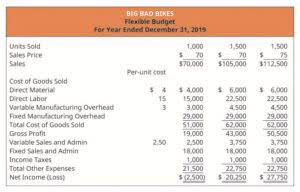
The fully diluted shares outstanding count includes diluting securities, such as convertibles, capital notes and warrants. Companies with diluting securities could increase the number of shares outstanding in the future, i.e. they could issue more shares one day. Paid-in capital, also known as contributed capital, represents the total amount of money that a company has received from investors in exchange for its stock. This includes both the par value of the issued shares and any amounts paid over the par value (the APIC). Diluted EPS includes options, convertible securities, and warrants outstanding that can affect total shares outstanding when exercised.
Where to Find Shares Outstanding
- To calculate the total number of outstanding shares, you can also divide the company’s market capitalization by the current share price.
- Corporate finance professionals, such as investment bankers, may use common stock prices on the exchange as an indicator of a company’s performance.
- If you have an interest in stock trading or investing, your next step is to choose a broker that works for your investment style.
- The Common Stock Formula is a pivotal tool used for financial analysis, specifically, in indicating a firm’s financial health and its ability to generate profits for its shareholders.
- It’s a frictionless product, and you can get up and running in minutes with enterprise-grade product offerings, like business checking, corporate cards, and AP automation, that grow with you.
The calculation for common stock outstanding can seem a little daunting at first simply because so much accounting jargon is used to define and calculate it. Now that you’re equipped with this foundation of knowledge, all you need to do to figure it out is to go look it up on any company’s balance sheet in their 10-Q or 10-K filing. Let’s say that Helpful Fool Company has repurchased 500 shares in this year’s buyback program. The company now has 5,000 authorized shares, 2,000 issued, 500 in treasury stock, and 1,500 outstanding. When a company buys back its own shares, that stock is accounted for as “treasury stock” on its balance sheet.

What Is Capital Stock in Accounting?
Some shareholders own a significant portion of outstanding shares and have more control over the company’s decisions and outcomes. The number of outstanding shares also affects a company’s ability to generate capital through future stock issuances. Understanding outstanding shares is crucial for investors to make informed decisions about buying or selling stock. Investors and analysts use outstanding shares to evaluate a company’s performance and value. To derive the outstanding shares of a company, you need to follow these steps. The number of shares outstanding can fluctuate as the business issues more shares, repurchases some of them, and retires shares.

How Does It Affect Investors?
Diluted EPS is always less than the basic EPS, as the denominator in the latter is higher. Companies with options, convertible bonds, etc., disclose both basic as well as diluted EPS in their financial disclosures. Basic EPS uses outstanding shares, which are actually held by the public how to find shares outstanding and company insiders.

The amount is listed on the balance sheet in the company’s shareholders’ equity section. We now have the necessary inputs to calculate the basic EPS, so we’ll divide the net earnings for common equity by the weighted average shares outstanding. Weighted average outstanding shares are an important factor during the calculation of earnings per share for the Company. Weighted average shares outstanding is the number of company shares after incorporating changes in the shares during the year.
- Common examples include accounts payable, short-term loans, dividends payable, notes payable, the current portion of long-term debt, accrued expenses, and income taxes payable.
- These intangibles would not always be factored in to a book value calculation.
- Diluted EPS is always less than the basic EPS, as the denominator in the latter is higher.
- Preferred stock is often misunderstood, but it’s actually quite straightforward.
- Retained earnings are how much the company keeps after it has paid out expenses and dividends.
- Other companies may explicitly list their outstanding shares as a line item in the equity section of their balance sheet.
Note that stock dividends, however, don’t change the total shareholders’ equity; they just move value from retained earnings to paid-in capital within the equity section of the balance sheet. Note that many companies do not have preferred shares, and for those companies, there are no preferred dividends that need to be deducted. The reason preferred dividends are deducted is that EPS represents only the earnings available to QuickBooks common shareholders, and preferred dividends need to be paid out before common shareholders receive anything.
It takes into account any variations in the number of shares outstanding during the period. Enter relevant share counts, including any treasury stock, into the calculator to determine the common stock outstanding. All companies must report their common stock outstanding on their balance sheet. You can do that by navigating to the company’s investor-relations webpage, finding its financial reporting, and opening up its most recent 10-Q or 10-K filing. Treasury stock does not carry voting rights, nor does it receive dividends, and it is not included in the calculation of earnings per share (EPS).

Generally speaking, the differential between the equity value and enterprise value of a company tends to increase the greater its market share and the longer the company is positioned as a market leader—i.e. With a track record of profitability and strong free cash flow)—as debt financing becomes more readily available and “cheaper” for such borrowers with less credit risk. The equity value is the fair market value (FMV) of a company’s common equity at present. If we were to ignore the dilutive impact of non-basic shares in the calculation of Insurance Accounting equity value, we would arrive at $200mm.

Learn how to calculate Z spread in finance with our step-by-step guide, covering credit spreads, bond valuation, and risk management strategies. Learn how to calculate NoPAT and make informed business decisions with our step-by-step guide, boosting profitability and strategic planning. If the line exists, there should be a statement within the line item description stating the number of shares repurchased, which you should retain. Founded in 1993, The Motley Fool is a financial services company dedicated to making the world smarter, happier, and richer. Book value of equity (BVE) and Market value of equity (MVE) are two important metrics used to assess a company’s value, but they approach this valuation from different perspectives.
